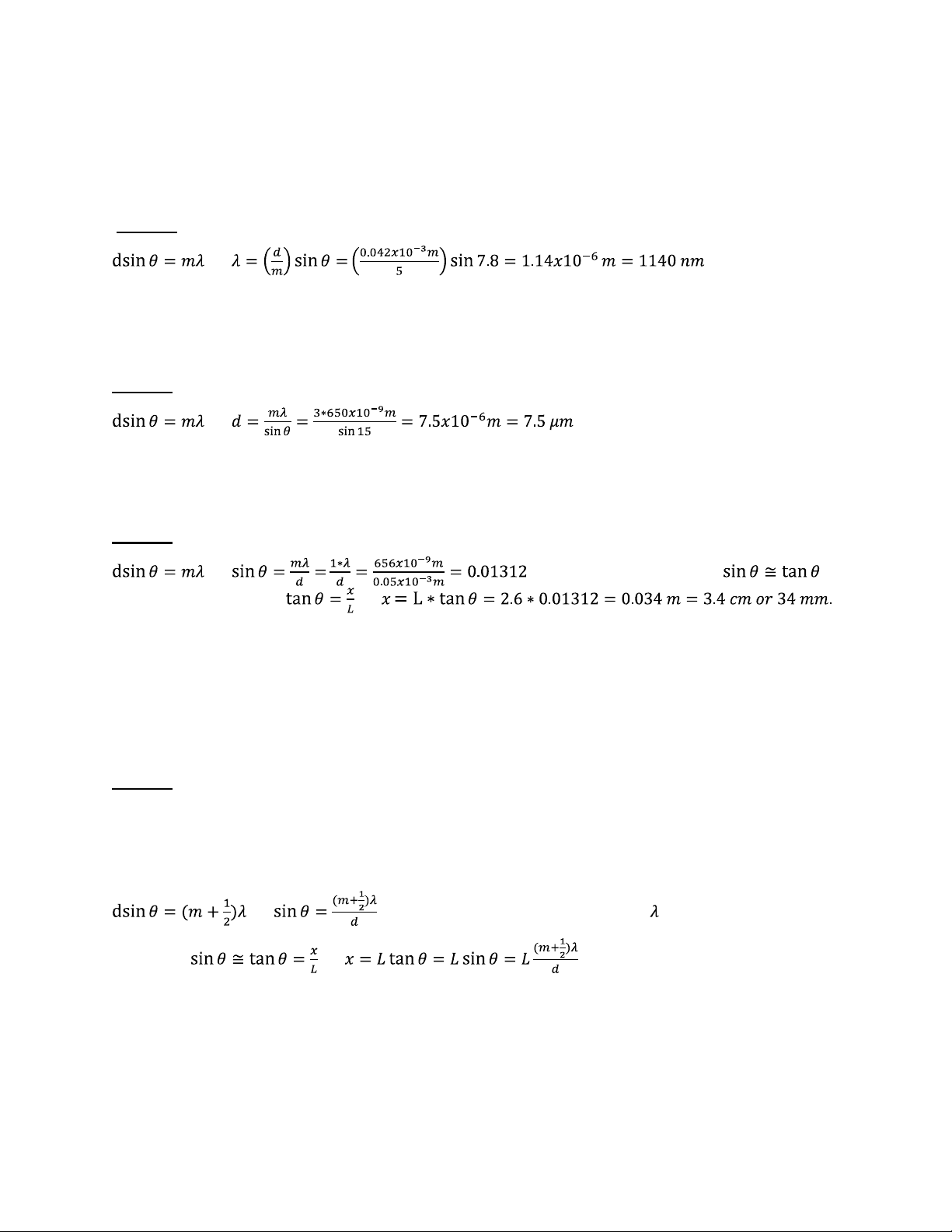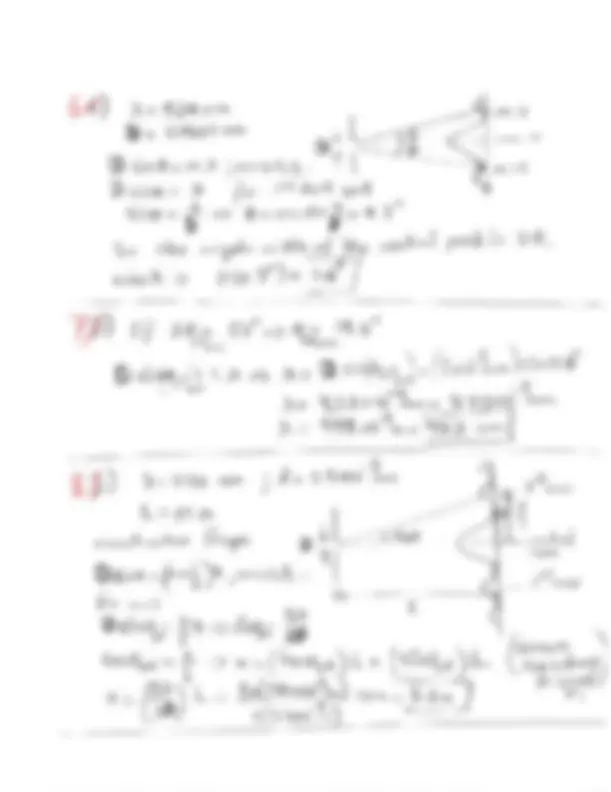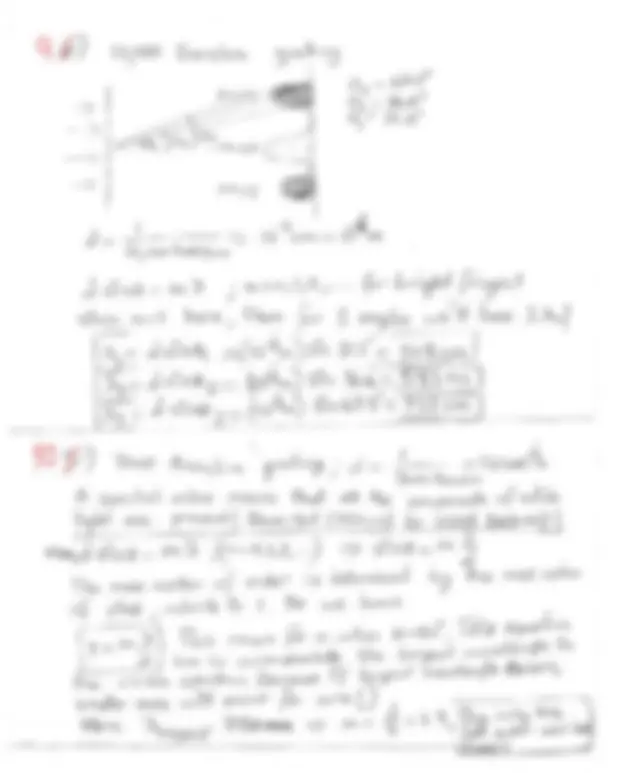





Study with the several resources on Docsity

Earn points by helping other students or get them with a premium plan


Prepare for your exams
Study with the several resources on Docsity

Earn points to download
Earn points by helping other students or get them with a premium plan
Community
Ask the community for help and clear up your study doubts
Discover the best universities in your country according to Docsity users
Free resources
Download our free guides on studying techniques, anxiety management strategies, and thesis advice from Docsity tutors
Material Type: Assignment; Professor: Zorba; Class: Optics & Modern Physics; Subject: Physics; University: Whittier College; Term: Unknown 1989;
Typology: Assignments
1 / 5

This page cannot be seen from the preview
Don't miss anything!




1 - ) Monochromatic light falling on two slits 0.042 mm apart produces the fifth-order fringe at a 7.8° angle. What is the wavelength of the light used? Solution: . 2 - ) The third-order fringe of 650-nm light is observed at an angle of 15° when the light falls on two narrow slits. How far apart are the slits? Solution: . 3 - ) A parallel beam of light from a He-Ne laser, with a wavelength 656 nm, falls on two very narrow slits 0.050 mm apart. How far apart are the fringes in the center of the pattern if the screen is 2.6 m away? Solution: (Note that for small angles,. Now, since we also have 4 - ) In a water tank experiment, water waves are generated with their crests 2.5 cm apart and parallel. They pass through two openings 5.0 cm apart in a long wooden board. If the end of the tank is 2.0 m beyond the boards, where would you stand, relative to the “straight-through” direction, so that you received little or no wave action? Solution: One would stand where there is no wave action meaning where there is destructive interference. Our task then becomes one of finding x values (measured from the center of the screen) for the available minima. The “availability” is stipulated by the sine function not exceeding 1. Thus we proceed as follows: . Since L is to big compared with d and , angles involved are small, thus , where x is where one should stand. Obviously there will be as many x values as there are allowed m values. For clarity, let us Indicate all this in a table:
m Distance to each side of center 0 1 2 We have to stop here as sine cannot exceed 1! 5 - ) A very thin sheet of plastic (n = 1.60) covers one slit of a double-slit apparatus illuminated by 540-nm light. The center point on the screen, instead of being a maximum, is dark. What is the (minimum) thickness of the plastic? Solution: As shown in the figure below, we want a phase difference of 180° between the waves exiting the two slits. For the minimum thickness of the plastic that means a half cycle difference between them. Thus we count the number of waves within a thickness of t for each wavelength and equate their difference to ½! . The solutions for the remaining problems are at the end below (just scroll down).